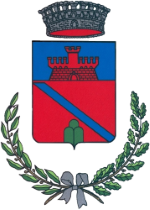
In Valdisotto, it is more common than elsewhere to find beautiful examples of basins used as fountains, carved from monolithic blocks. A prime example of these structures is the fountain in the locality of Pòrtul, a name likely derived from the presence of enclosures or “barriers that separated the inhabited areas from the fenced strips of adjacent farmland.” This large, roughly rectangular basin bears the inscription of the year 1875 on the side facing the main road, indicating when it was constructed.
Like many other fountains, the Pòrtul fountain served various functions beyond just domestic needs such as providing water, animal watering, washing clothes, and cleaning sheep’s wool. It was also an important communal gathering place for the residents of the hamlet. In this context, the bugl (literally “spring, whirlpool, spurt, regurgitation, pool, pond, splash,” meaning fountain, trough, or washhouse whether carved from a tree trunk or constructed with wooden planks) played a significant role in shaping the community’s identity.






